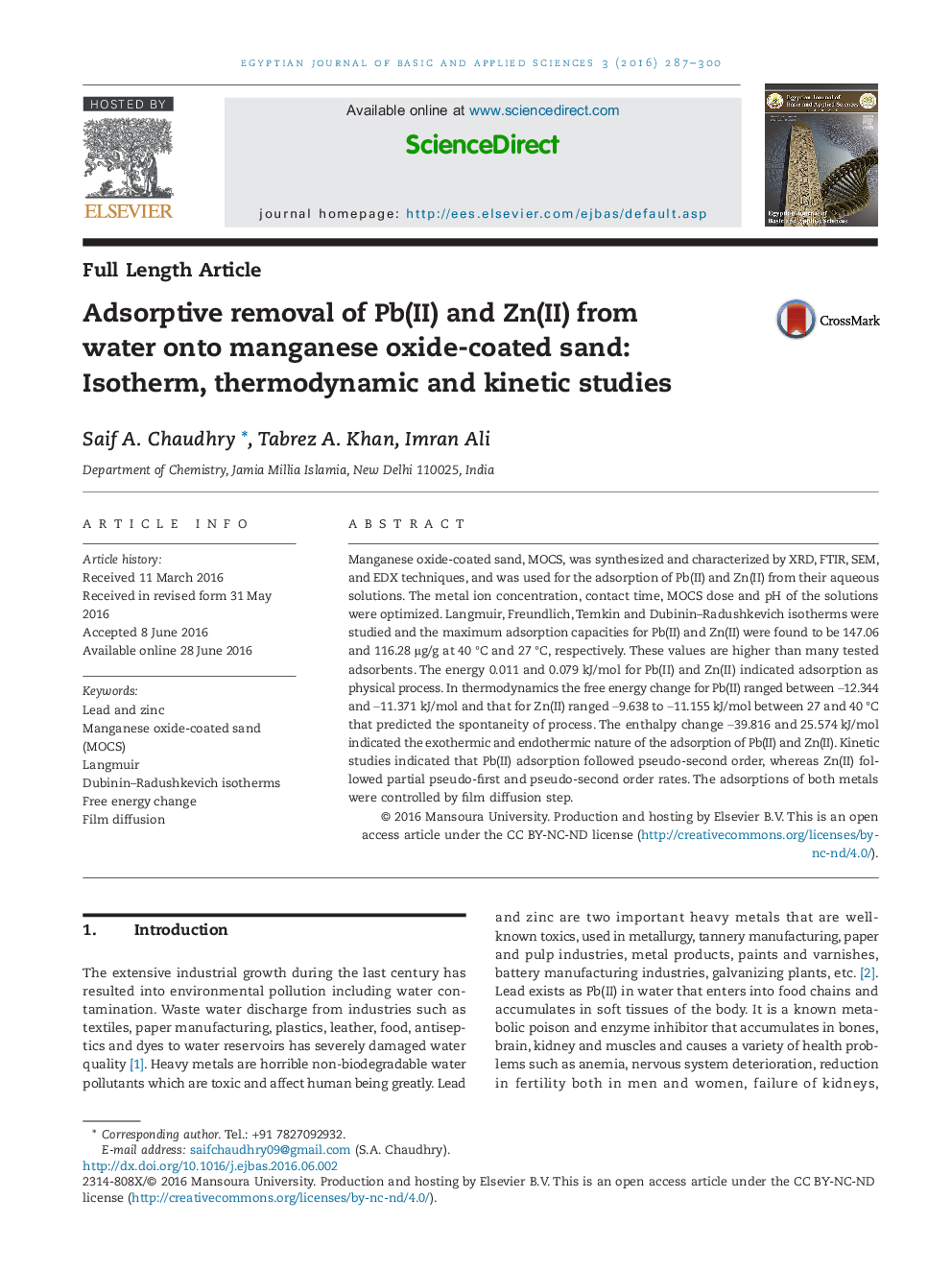| Article ID | Journal | Published Year | Pages | File Type |
|---|---|---|---|---|
| 560993 | Egyptian Journal of Basic and Applied Sciences | 2016 | 14 Pages |
•Manganese oxide-coated sand (MOCS) is a new versatile and effective adsorbent.•Adsorption of Pb(II) and Zn(II) was fast, economic and eco-friendly.•Uptakes of Pb(II) and Zn(II) were 95 and 96.42%.•Pb(II) adsorption fitted well pseudo-second and Zn(II) pseudo-first order kinetics.•The adsorption process depended on film diffusion steps.
Manganese oxide-coated sand, MOCS, was synthesized and characterized by XRD, FTIR, SEM, and EDX techniques, and was used for the adsorption of Pb(II) and Zn(II) from their aqueous solutions. The metal ion concentration, contact time, MOCS dose and pH of the solutions were optimized. Langmuir, Freundlich, Temkin and Dubinin–Radushkevich isotherms were studied and the maximum adsorption capacities for Pb(II) and Zn(II) were found to be 147.06 and 116.28 µg/g at 40 °C and 27 °C, respectively. These values are higher than many tested adsorbents. The energy 0.011 and 0.079 kJ/mol for Pb(II) and Zn(II) indicated adsorption as physical process. In thermodynamics the free energy change for Pb(II) ranged between −12.344 and −11.371 kJ/mol and that for Zn(II) ranged −9.638 to −11.155 kJ/mol between 27 and 40 °C that predicted the spontaneity of process. The enthalpy change −39.816 and 25.574 kJ/mol indicated the exothermic and endothermic nature of the adsorption of Pb(II) and Zn(II). Kinetic studies indicated that Pb(II) adsorption followed pseudo-second order, whereas Zn(II) followed partial pseudo-first and pseudo-second order rates. The adsorptions of both metals were controlled by film diffusion step.
Graphical AbstractFigure optionsDownload full-size imageDownload as PowerPoint slide
